Papers by Joaquin Martinez Pino
Biblio 3w: revista bibliográfica de geografía y ciencias sociales, 2014
ABSTRACT
Espacio Tiempo Y Forma Serie Vii Historia Del Arte, 2012
The disentailment of the ecclesiastical property and the destiny of the disappeared monasteries i... more The disentailment of the ecclesiastical property and the destiny of the disappeared monasteries in Murcia.
Tejuelo Revista De Anabad Murcia, 2012
Este artículo hace un repaso de las principales etapas por las que pasa la protección y conservac... more Este artículo hace un repaso de las principales etapas por las que pasa la protección y conservación del patrimonio histórico artístico durante el siglo XIX. Ofrece además una visión sobre el estado de la cuestión, y señala las fuentes documentales imprescindibles para ulteriores investigaciones.
Tejuelo Revista De Anabad Murcia, 2012
Este artículo hace un repaso de las principales etapas por las que pasa la protección y conservac... more Este artículo hace un repaso de las principales etapas por las que pasa la protección y conservación del patrimonio histórico artístico durante el siglo XIX. Ofrece además una visión sobre el estado de la cuestión, y señala las fuentes documentales imprescindibles para ulteriores investigaciones.
El viejo tridente de Carlos III va a servir para albergar un barrio que, en el pensamiento de Cas... more El viejo tridente de Carlos III va a servir para albergar un barrio que, en el pensamiento de Castro, estaba destinado en gran medida a equipamientos industriales y viviendas para obreros, destino que exigía además hospitales, hospicios, cárceles, cuarteles y otras construcciones de servicios, entre las que cabe destacar mercados y mataderos.
Antigüedad del Castillo, Mª D., Martínez Pino, J. "Patrimonio cultural en tiempo de guerra: entre el expolio y la protección", en Albero Muñoz, M. y Pérez Sánchez, M. (Coords.), Yngenio et arte: elogio, fama y fortuna de la memoria del artista. Madrid, Fund. Universit. Española, 2018, pp. 462-482 Yngenio et arte: elogio, fama y fortuna de la memoria del artista. Madrid, Fundación Universitaria Española., 2018
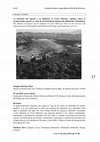
e-rph, 2018
El aprovechamiento histórico del esparto es una de las señas de identidad del sureste español. A ... more El aprovechamiento histórico del esparto es una de las señas de identidad del sureste español. A su uso tradicional se suma una explotación industrial cuyo esplendor tiene lugar a mediados del siglo XX. Este trabajo aborda los aspectos culturales vinculados a esta industria en Cieza (Murcia), con especial atención a los valores inmateriales, industriales y paisajísticos asociados. Por otro lado, se estudia el sistema de protección vigente y la situación de estos bienes. Finalmente, se presentan y analizan las iniciativas de recuperación de este patrimonio llevadas a cabo desde el Museo-Centro de Interpretación del Esparto de Cieza.
The historical use of esparto is ingrained in the identity of southeast Spain. Along with its traditional uses, it bene ted from an industrial boom in the middle of the 20th century. This paper addresses the cultural aspects linked to this industry in Cieza (Murcia), paying special attention to the intangible assets, and to both the industrial and landscape values. On the other hand, the current protection system and the situation of these heritage sites are also examined. Finally, we present and analyze the recovery e orts of this cultural heritage carried out by the Museum and Center of Interpretation of Esparto in Cieza.
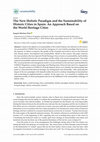
Linked to the objectives of sustainability of the United Nations, the reflection on the historic ... more Linked to the objectives of sustainability of the United Nations, the reflection on the historic city promoted by UNESCO has favored the emergence of a new holistic paradigm that focuses on the capacity of culture to improve the quality of life of people and seeks to recover the historical link among culture, development and sustainability. Based on this context, this paper analyzes the main problems that face Spanish World Heritage Cities in terms of sustainability and livability, and the correlation between the new paradigm and the reality of its current management. This study explored sustainability indicators based on the evolution of the population and the number of visitors. The current protection and management model is reviewed based on the four basic tools identified by UNESCO: Regulatory systems, Knowledge and Planning tools, Financial tools and Civic engagement tools. The joint analysis of UNESCO's Periodic Reports allows us to identify the shortcomings that point to a disconnection between heritage city management and citizenship. After analyzing the impact of the new paradigm in the Spanish reality, the need to continue deepening its dissemination and accelerating its implementation is evident. In the same way. it is essential to establish and implement models of citizen participation that favor the fulfillment of the sustainability challenges of historic cities.
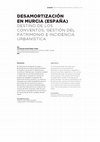
Revista de História de Arte – Série W, 2016
En este artículo se aborda el origen y desarrollo de una política desamortizadora en España a tra... more En este artículo se aborda el origen y desarrollo de una política desamortizadora en España a través de sus disposiciones normativas. Medidas que vinculamos también al origen de una conciencia patrimonial
y, sobre todo, a la puesta en marcha de organismos dirigidos a la gestión del patrimonio histórico artístico. Los informes realizados por la Real Sociedad Económica de Amigos del País de Murcia sobre el destino de los conventos desamortizados nos permiten adentrarnos en el devenir de muchos de estos conjuntos, toda vez que observamos su protagonismo en el proceso de trasformación de las ciudades de esta región.
This article describes the origin and development of the disentailment
legislation in Spain through its regulations.
By examining these regulations, a link can be established between the growth of heritage consciousness in the society and the launch of organizations aimed at managing that artistic heritage. The reports facilitated by the Royal Economic Society of Friends of Murcia on the fate of con scated convents enables us to explore their future by examining their role in the transformation of the cities of this region.
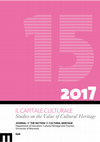
Il Capitale culturale. Studies on the Value of Cultural Heritage, 2017
L’attenzione verso il paesaggio in quanto realtà patrimoniale, in cui viene ad integrarsi un’inte... more L’attenzione verso il paesaggio in quanto realtà patrimoniale, in cui viene ad integrarsi un’intera serie di valori naturali e culturali, ha raggiunto negli ultimi decenni un deciso sviluppo, che si rende manifesto tanto all’interno delle normative dei diversi Stati e regioni quanto in ambito internazionale. La Convenzione Europea del Paesaggio, sottoscritta dalla Spagna nel 2007, costituisce in tal senso l’esempio più chiaro della rilevanza e della complessa dimensione che ha oggi acquisito il termine “paesaggio”.
Il concetto di paesaggio è andato tradizionalmente a legarsi ad una visione estetizzante dell’ambiente e, come tale, ad integrarsi progressivamente nella normativa sul patrimonio. Tuttavia la componente fisica del paesaggio comporta a sua volta uno sviluppo legislativodal punto di vista naturalistico e della gestione delle risorse ambientali che è possibile ripercorrere con chiarezza a partire da un punto lontano nel tempo. L’obiettivo di questo articolo è quello di fornire una visione sull’evoluzione della dimensione culturale e naturale del paesaggio in Spagna. Un percorso sostenuto metodologicamente dalla normativa storica, ma che cerca anche di identificare i fatti culturali che hanno giustificato e provocato il suo sviluppo.
Dall’analisi e dallo studio delle circostanze, non solo si conferma la consapevolezza di un legame profondo tra l’oggetto del patrimonio e lo spazio che lo circonda, ma possiamo anche concludere che il patrimonio storico-artistico e il patrimonio naturale condividono i processi paralleli di costituzione e consolidamento, dimostrando l’esistenza di una lunga tradizione nella quale, in qualche modo, il patrimonio culturale e naturale costituiscono le due facce della stessa realtà.
The attention to landscape as cultural heritage, in which a series of natural and cultural values are integrated, has developed substantially in recent decades, and is reflected both in the regulations of each individual state as well as each region internationally. The European Landscape Convention, ratified by Spain in 2007, thus represents the clearest example of the relevance and complexity that the term landscape embodies.
The concept of landscape has traditionally been linked to an aesthetic view of the environment, and as a result has gradually integrated itself into the financial regulations. However, the physical element of the landscape also involves a legislative development from the point of view of the environment and the management of natural resources that can be followed from ancient practices. The aim of this article is to provide an insight into the evolution of cultural and natural dimensions of landscape in Spain. A tour through the historical vertebrae, seeking to identify the cultural facts that justified and motivated this new development.
Through analyzing and studying the facts, not only the awareness of a deep bond between the patrimonial object and its surrounding space is confirmed, but we can also conclude that the historical and artistic heritage as well as the natural heritage shared parallel processes of constitution and consolidation, demonstrating the existence of a long tradition in which, somehow, cultural heritage and natural heritage are two sides of the same reality.
Spain's pre-industrial heritage is of high cultural value as a manifestation of the traditional f... more Spain's pre-industrial heritage is of high cultural value as a manifestation of the traditional forms of production in buildings with unique features and as an expression of the identity of many territories. This heritage, increasingly valued as a result of the growing interest in heritage in general and production-related heritage in particular, offers great opportunities as a tourism resource. This legacy has been taken as the basis for opening new museums and interpretation centres, becoming one of today's points of reference for places of old artisan or manufacturing traditions and a local management model that promotes conservation and promotion in line with the indispensable principles of environmental sustainability.
“Las Comisiones de Monumentos a partir del Reglamento de 1865. La Provincial de Murcia”, en ANTIGÜEDAD, M.D. (Dir.) y ALZAGA, A. (Coord.): Colecciones, expolio, museos y mercado artístico en España... Madrid, Min. Ciencia e Innovación, UNED, Ramón Areces, 2011, págs. 209-233. Este artículo recoge la historia y las principales actuaciones llevadas a cabo por la Comisión Pr... more Este artículo recoge la historia y las principales actuaciones llevadas a cabo por la Comisión Provincial de Monumentos de Murcia desde la entrada en vigor del Reglamento de 21 de noviembre de 1865 hasta la supresión de estas corporaciones durante la Segunda República. Con ello se pretende ilustrar un periodo especialmente fructífero en la historia de la Comisión murciana, completando así un estudio anterior que abarcaba desde los años previos a su creación hasta dicho año de 1865*.
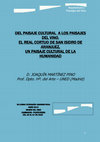
El Paisaje Cultural ha adquirido en los últimos años una presencia creciente entre los bienes cul... more El Paisaje Cultural ha adquirido en los últimos años una presencia creciente entre los bienes culturales. No hay más que consultar la lista de Patrimonio Mundial de la UNESCO para comprobar que entre los bienes declarados en los últimos años un gran número de ellos se adscriben bajo esta etiqueta. El propósito del texto que aquí se presenta es rastrear el proceso de formación del concepto “Paisaje Cultural”, para centrarnos posteriormente en un tipo de paisaje de crecente interés, como es el Paisaje del Vino. Para ello nos valdremos de un ejemplo que entendemos paradigmático, como es el del Real Cortijo de San Isidro en Aranjuez, un emplazamiento creado por orden de Carlos III destinado a convertirse en centro de experimentación vinícola. Su construcción, claramente vinculado a la experimentación fisiocrática, debe ser leída también como parte de un planteamiento territorial más amplio, como es el del Real Sitio de Aranjuez, Patrimonio de la Humanidad desde 2001 como Paisaje Cultural.
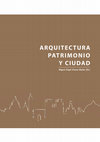
El edificio El Contraste constituía uno de los mejores ejemplos de arquitectura civil de principi... more El edificio El Contraste constituía uno de los mejores ejemplos de arquitectura civil de principios del siglo XVII en Murcia. Vinculado a la producción y comercio de la seda, se levantó entre 1601 y 1608 como sede del organismo regulador y como depósito de armas para la defensa de la zona.
Este trabajo recupera un periodo crucial de este significativo edificio, el que comprende desde 1866, fecha en la que el Ayuntamiento cede el edificio a la Comisión Provincial de Monumentos para la instalación del Museo Provincial, hasta 1933, en que se acomete el derribo del mismo a causa de su lamentable estado.
Los avatares por los que pasa El Contraste, declarado Monumento Arquitectónico-Artístico en noviembre de 1922, nos permite rastrear también el lento proceso de asunción de una conciencia patrimonial moderna. Consecuencia de ello es en buena medida el fatal destino del inmueble.
Abstract
The building Contraste in Murcia was one of the best examples of civil architecture of the early XVII century in Murcia. The building is linked to the production and trade of silk. It was constructed between 1601 and 1608 as the seat of the regulator and as a store of weapons for the defense of the area.
This study deals a crucial period of this important building, which extends from 1866, the date on which the City Council gave the building to the Provincial Monuments Commission for installation of the Provincial Museum, until 1933, when it was demolished because of their bad state.
The building's history, declared Architectural-Artistic Monument in November 1922, allows us to follow the slow process of taking a modern heritage awareness. The protection of this declaration was not enough to ensure their preservation.
Este artículo aborda la destrucción de los llamados “Baños Árabes” de Murcia, monumento histórico... more Este artículo aborda la destrucción de los llamados “Baños Árabes” de Murcia, monumento histórico artístico protegido, a causa de la política municipal de trasformación y desarrollo urbano emprendida tras la Guerra Civil. Partiendo de su contextualización histórica, el objetivo es dar a conocer el trabajo desarrollado al efecto por los organismos responsables de la conservación del monumento. A partir de la documentación histórica compilada, se reconstruye un episodio que permite al historiador analizar las limitaciones y logros de la política y de la administración para la protección del patrimonio del periodo; toda vez que se evidencia el papel relevante de la opinión pública en la conservación y estima de los bienes culturales.
Este artículo hace un repaso de las principales etapas por las que pasa la protección y conservac... more Este artículo hace un repaso de las principales etapas por las que pasa la protección y conservación del patrimonio histórico artístico durante el siglo XIX. Ofrece además una visión sobre el estado de la cuestión, y señala las fuentes documentales imprescindibles para ulteriores investigaciones.





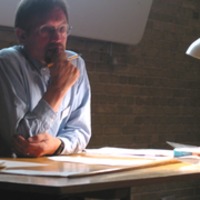





Uploads
Papers by Joaquin Martinez Pino
The historical use of esparto is ingrained in the identity of southeast Spain. Along with its traditional uses, it bene ted from an industrial boom in the middle of the 20th century. This paper addresses the cultural aspects linked to this industry in Cieza (Murcia), paying special attention to the intangible assets, and to both the industrial and landscape values. On the other hand, the current protection system and the situation of these heritage sites are also examined. Finally, we present and analyze the recovery e orts of this cultural heritage carried out by the Museum and Center of Interpretation of Esparto in Cieza.
y, sobre todo, a la puesta en marcha de organismos dirigidos a la gestión del patrimonio histórico artístico. Los informes realizados por la Real Sociedad Económica de Amigos del País de Murcia sobre el destino de los conventos desamortizados nos permiten adentrarnos en el devenir de muchos de estos conjuntos, toda vez que observamos su protagonismo en el proceso de trasformación de las ciudades de esta región.
This article describes the origin and development of the disentailment
legislation in Spain through its regulations.
By examining these regulations, a link can be established between the growth of heritage consciousness in the society and the launch of organizations aimed at managing that artistic heritage. The reports facilitated by the Royal Economic Society of Friends of Murcia on the fate of con scated convents enables us to explore their future by examining their role in the transformation of the cities of this region.
Il concetto di paesaggio è andato tradizionalmente a legarsi ad una visione estetizzante dell’ambiente e, come tale, ad integrarsi progressivamente nella normativa sul patrimonio. Tuttavia la componente fisica del paesaggio comporta a sua volta uno sviluppo legislativodal punto di vista naturalistico e della gestione delle risorse ambientali che è possibile ripercorrere con chiarezza a partire da un punto lontano nel tempo. L’obiettivo di questo articolo è quello di fornire una visione sull’evoluzione della dimensione culturale e naturale del paesaggio in Spagna. Un percorso sostenuto metodologicamente dalla normativa storica, ma che cerca anche di identificare i fatti culturali che hanno giustificato e provocato il suo sviluppo.
Dall’analisi e dallo studio delle circostanze, non solo si conferma la consapevolezza di un legame profondo tra l’oggetto del patrimonio e lo spazio che lo circonda, ma possiamo anche concludere che il patrimonio storico-artistico e il patrimonio naturale condividono i processi paralleli di costituzione e consolidamento, dimostrando l’esistenza di una lunga tradizione nella quale, in qualche modo, il patrimonio culturale e naturale costituiscono le due facce della stessa realtà.
The attention to landscape as cultural heritage, in which a series of natural and cultural values are integrated, has developed substantially in recent decades, and is reflected both in the regulations of each individual state as well as each region internationally. The European Landscape Convention, ratified by Spain in 2007, thus represents the clearest example of the relevance and complexity that the term landscape embodies.
The concept of landscape has traditionally been linked to an aesthetic view of the environment, and as a result has gradually integrated itself into the financial regulations. However, the physical element of the landscape also involves a legislative development from the point of view of the environment and the management of natural resources that can be followed from ancient practices. The aim of this article is to provide an insight into the evolution of cultural and natural dimensions of landscape in Spain. A tour through the historical vertebrae, seeking to identify the cultural facts that justified and motivated this new development.
Through analyzing and studying the facts, not only the awareness of a deep bond between the patrimonial object and its surrounding space is confirmed, but we can also conclude that the historical and artistic heritage as well as the natural heritage shared parallel processes of constitution and consolidation, demonstrating the existence of a long tradition in which, somehow, cultural heritage and natural heritage are two sides of the same reality.
Este trabajo recupera un periodo crucial de este significativo edificio, el que comprende desde 1866, fecha en la que el Ayuntamiento cede el edificio a la Comisión Provincial de Monumentos para la instalación del Museo Provincial, hasta 1933, en que se acomete el derribo del mismo a causa de su lamentable estado.
Los avatares por los que pasa El Contraste, declarado Monumento Arquitectónico-Artístico en noviembre de 1922, nos permite rastrear también el lento proceso de asunción de una conciencia patrimonial moderna. Consecuencia de ello es en buena medida el fatal destino del inmueble.
Abstract
The building Contraste in Murcia was one of the best examples of civil architecture of the early XVII century in Murcia. The building is linked to the production and trade of silk. It was constructed between 1601 and 1608 as the seat of the regulator and as a store of weapons for the defense of the area.
This study deals a crucial period of this important building, which extends from 1866, the date on which the City Council gave the building to the Provincial Monuments Commission for installation of the Provincial Museum, until 1933, when it was demolished because of their bad state.
The building's history, declared Architectural-Artistic Monument in November 1922, allows us to follow the slow process of taking a modern heritage awareness. The protection of this declaration was not enough to ensure their preservation.
The historical use of esparto is ingrained in the identity of southeast Spain. Along with its traditional uses, it bene ted from an industrial boom in the middle of the 20th century. This paper addresses the cultural aspects linked to this industry in Cieza (Murcia), paying special attention to the intangible assets, and to both the industrial and landscape values. On the other hand, the current protection system and the situation of these heritage sites are also examined. Finally, we present and analyze the recovery e orts of this cultural heritage carried out by the Museum and Center of Interpretation of Esparto in Cieza.
y, sobre todo, a la puesta en marcha de organismos dirigidos a la gestión del patrimonio histórico artístico. Los informes realizados por la Real Sociedad Económica de Amigos del País de Murcia sobre el destino de los conventos desamortizados nos permiten adentrarnos en el devenir de muchos de estos conjuntos, toda vez que observamos su protagonismo en el proceso de trasformación de las ciudades de esta región.
This article describes the origin and development of the disentailment
legislation in Spain through its regulations.
By examining these regulations, a link can be established between the growth of heritage consciousness in the society and the launch of organizations aimed at managing that artistic heritage. The reports facilitated by the Royal Economic Society of Friends of Murcia on the fate of con scated convents enables us to explore their future by examining their role in the transformation of the cities of this region.
Il concetto di paesaggio è andato tradizionalmente a legarsi ad una visione estetizzante dell’ambiente e, come tale, ad integrarsi progressivamente nella normativa sul patrimonio. Tuttavia la componente fisica del paesaggio comporta a sua volta uno sviluppo legislativodal punto di vista naturalistico e della gestione delle risorse ambientali che è possibile ripercorrere con chiarezza a partire da un punto lontano nel tempo. L’obiettivo di questo articolo è quello di fornire una visione sull’evoluzione della dimensione culturale e naturale del paesaggio in Spagna. Un percorso sostenuto metodologicamente dalla normativa storica, ma che cerca anche di identificare i fatti culturali che hanno giustificato e provocato il suo sviluppo.
Dall’analisi e dallo studio delle circostanze, non solo si conferma la consapevolezza di un legame profondo tra l’oggetto del patrimonio e lo spazio che lo circonda, ma possiamo anche concludere che il patrimonio storico-artistico e il patrimonio naturale condividono i processi paralleli di costituzione e consolidamento, dimostrando l’esistenza di una lunga tradizione nella quale, in qualche modo, il patrimonio culturale e naturale costituiscono le due facce della stessa realtà.
The attention to landscape as cultural heritage, in which a series of natural and cultural values are integrated, has developed substantially in recent decades, and is reflected both in the regulations of each individual state as well as each region internationally. The European Landscape Convention, ratified by Spain in 2007, thus represents the clearest example of the relevance and complexity that the term landscape embodies.
The concept of landscape has traditionally been linked to an aesthetic view of the environment, and as a result has gradually integrated itself into the financial regulations. However, the physical element of the landscape also involves a legislative development from the point of view of the environment and the management of natural resources that can be followed from ancient practices. The aim of this article is to provide an insight into the evolution of cultural and natural dimensions of landscape in Spain. A tour through the historical vertebrae, seeking to identify the cultural facts that justified and motivated this new development.
Through analyzing and studying the facts, not only the awareness of a deep bond between the patrimonial object and its surrounding space is confirmed, but we can also conclude that the historical and artistic heritage as well as the natural heritage shared parallel processes of constitution and consolidation, demonstrating the existence of a long tradition in which, somehow, cultural heritage and natural heritage are two sides of the same reality.
Este trabajo recupera un periodo crucial de este significativo edificio, el que comprende desde 1866, fecha en la que el Ayuntamiento cede el edificio a la Comisión Provincial de Monumentos para la instalación del Museo Provincial, hasta 1933, en que se acomete el derribo del mismo a causa de su lamentable estado.
Los avatares por los que pasa El Contraste, declarado Monumento Arquitectónico-Artístico en noviembre de 1922, nos permite rastrear también el lento proceso de asunción de una conciencia patrimonial moderna. Consecuencia de ello es en buena medida el fatal destino del inmueble.
Abstract
The building Contraste in Murcia was one of the best examples of civil architecture of the early XVII century in Murcia. The building is linked to the production and trade of silk. It was constructed between 1601 and 1608 as the seat of the regulator and as a store of weapons for the defense of the area.
This study deals a crucial period of this important building, which extends from 1866, the date on which the City Council gave the building to the Provincial Monuments Commission for installation of the Provincial Museum, until 1933, when it was demolished because of their bad state.
The building's history, declared Architectural-Artistic Monument in November 1922, allows us to follow the slow process of taking a modern heritage awareness. The protection of this declaration was not enough to ensure their preservation.
Revista Espacio, Tiempo y Forma, Serie VII-Historia del Arte.
Revista de la Facultad de Geografía e Historia, UNED.
AÑO 2016 NUEVA ÉPOCA ISSN 1130-4715 E-ISSN 2340-1478
Espacio, Tiempo y Forma, VII, is a peer-reviewed academic journal founded in 1988 and published by the Department of History of Art at the Faculty of Geography and History, UNED. It's devoted to the study of Art History of all periods and is addressed to the Spanish and international scholarly community, as well as to professionals in the field of Art. The journal welcomes previously unpublished articles, particularly works that provide an innovative approach, contribute to its field of research, and offer a critical analysis. It is published annually and the journal provides open access to its content.
Espacio, Tiempo y Forma, VII is a peer-reviewed academic journal founded in 1988 and published by the Department of History of Art at the Faculty of Geography and History, UNED. It's devoted to the study of Art History of all periods and is addressed to the Spanish and international scholarly community, as well as to professionals in the field of Art. The journal welcomes previously unpublished articles, particularly works that provide an innovative approach, contribute to its field of research, and offer a critical analysis. It is published annually and the journal provides open access to its content.